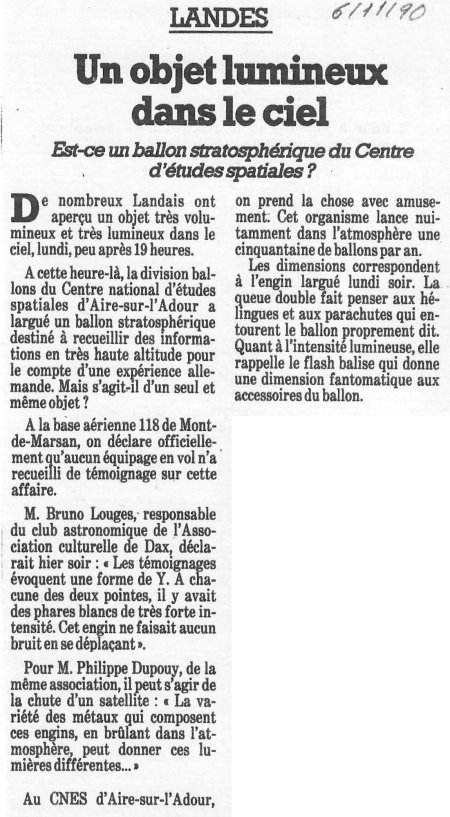The article below was published in the daily newspaper Sud Ouest, France, on November 6, 1990.
(This is about the observations of November 5, 1990 at about 7 p.m.; of what were re-entry of a Russian rocket debris.)

|
Is it a stratospheric balloon from the Center for Space Studies?
Many Landes residents saw a very large and very bright object in the sky, Monday, shortly after 7 p.m..
At this time, the balloon division of the Aire-sur-1'Adour National Center for Space Studies dropped a stratospheric balloon to collect information at very high altitude for a German experiment. But is it one and the same object?
At Mont-de-Marsan Air Base 118, it is officially declared that no flight crew has gathered testimonies on this matter.
Mr. Bruno Louges, head of the astronomical club of the Cultural Association of Dax, said yesterday evening: "The testimonies evoke a shape of Y. At each of the two points, there were white lights of very strong intensity. This craft made no noise while moving.
For Philippe Dupoul, of the same association, it may be the fall of a satellite: "The variety of metals that make up these machines, burning in the atmosphere, can give these different lights ..."
At the CNES at Aire-sur-l'Adour, one takes the affait lightly: this organisme launches at night in the atmosphere about fifty balloons a year.
The dimensions correspond to the craft dropped Monday evening. The double tail is reminiscent of the slings and parachutes surrounding the balloon itself. As for the luminous intensity, it recalls the flashing beacon which gives a ghostly dimension to the accessories of the balloon.